The mountainous terrain, rolling grasslands, and eroding buttes of Western South Dakota are surprising enough for visitors, but even more so is the abundance of wildlife that call it home. You can fill your whole vacation seeking out the critters of our area, and the best part is wildlife adventures can be found all year round.
Our neighbor to the east (looking at you Yellowstone) often casts a shadow over our area when it comes to wildlife destinations. But like all things South Dakota, we will surprise you. While Yellowstone National Park should remain on your bucket list – allow me to present a few reasons why the Rapid City region makes a great addition, or possibly an even better destination for some travelers.
Wildlife in Western South Dakota
Remember: Wildlife is wild. No matter how cute, cuddly and fluffy they are – they are unpredictable and need their space. Keep a recommended 25 yards away to protect yourself and respect them in their home.

Bison
Bison are the largest mammal in North America, and South Dakota offers multiple locations where you can witness this majestic animal. One of the most well-known locations is in Custer State Park. Their free-roaming herd of over 1,450 bison can almost always be found along Wildlife Loop Road (stop into the Visitor Center and they’ll tell you where to find them). Being stuck in a bison traffic jam happens frequently along this loop and it never gets old. Even during the winter season bison are easy to find as they seek out the salt found on vehicles. We call this thrilling experience a bison car wash, and no, your car will not actually come out clean. Other locations to find bison include Wind Cave National Park, Badlands National Park, and Bear Butte State Park. Wherever you seek them out, it's so important to keep your distance. Bison are extremely agile with the ability to run up to 35mph, and the pokeys on their head aren’t just for show.
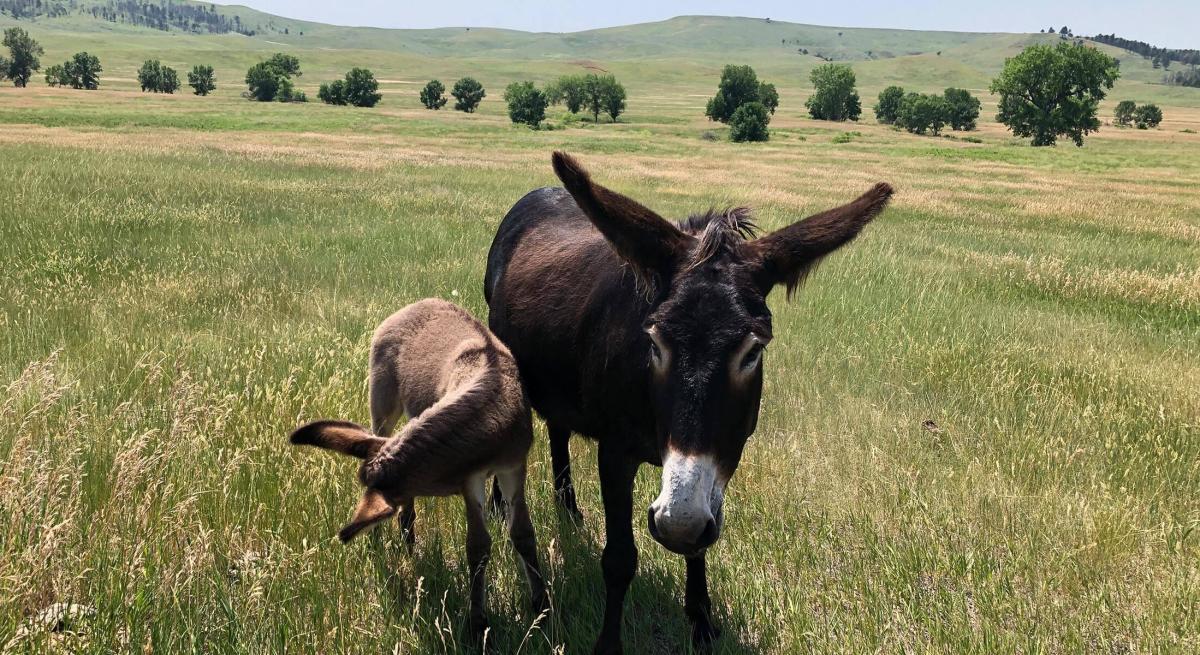
Burros
It will be harder to keep your distance from the “begging burros” of Custer State Park. They tend to burst the bubble of personal space with visitors frequently – but they are still wild so be careful around them. The burros can be found along a portion of the Wildlife Loop Road, but the story of how they ended up here is rather interesting. These park burros are descendants of those once used for trips up the tallest peak in South Dakota called Black Elk Peak (formerly known as Harney Peak).

Mountain Goats
The mountainous terrain and rocky formations of the Black Hills are what mountain goat dreams are made of; I would imagine. You can find them scaling boulders throughout the Black Hills National Forest, often spotted in areas around Mount Rushmore National Memorial, Crazy Horse Memorial® and in portions of Spearfish Canyon, along with higher points of Custer State Park. However, mountain goats aren’t native to the area. In 1924, Canada gifted some to Custer State Park where they were kept in a pen, until they escaped into the surrounding areas and have remained untamed ever since.
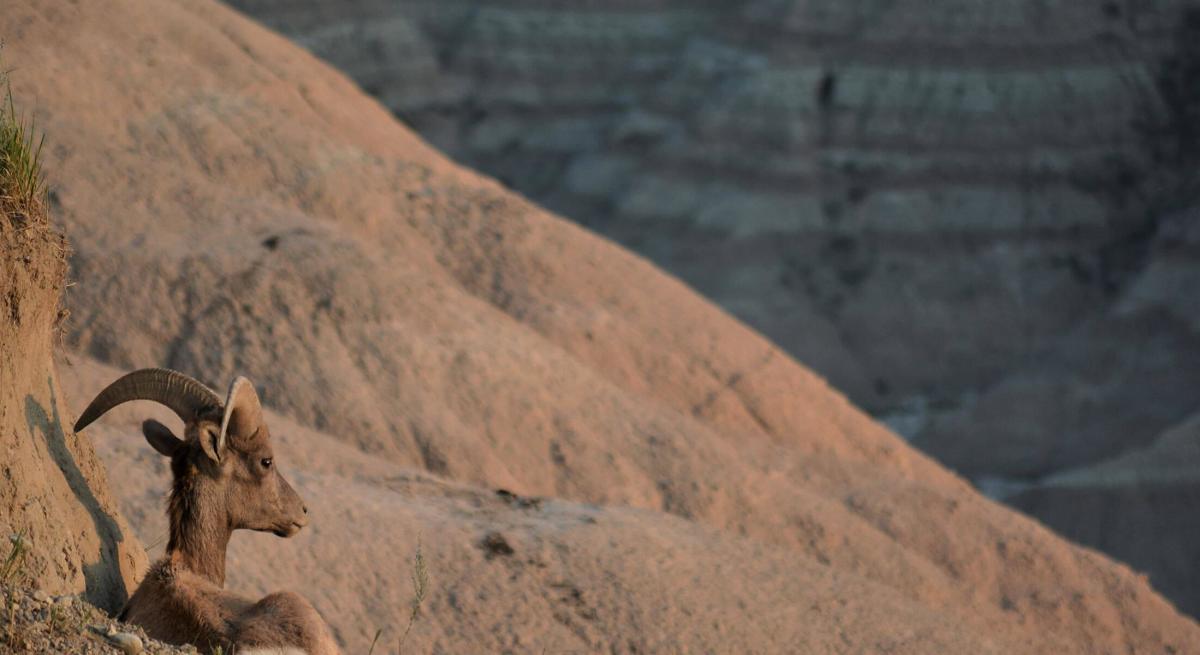
Bighorn Sheep
Another ridge climbing mammal in our area is the Bighorn Sheep. Most commonly they are found in Badlands National Park climbing the eroding buttes. A drive along Badlands Loop Road typically provides opportunities to spot a few. The park suggests making time for Pinnacles Overlook and Cedar Pass areas like Castle Trail and Big Badlands Overlook if you’re seeking them out. Bighorns can also be occasionally spotted in certain areas of Jewel Cave National Monument since being reintroduced in the Hell Canyon area. Keep an eye out for them in the historic areas of the park and along the monument boundaries near Highway 16.
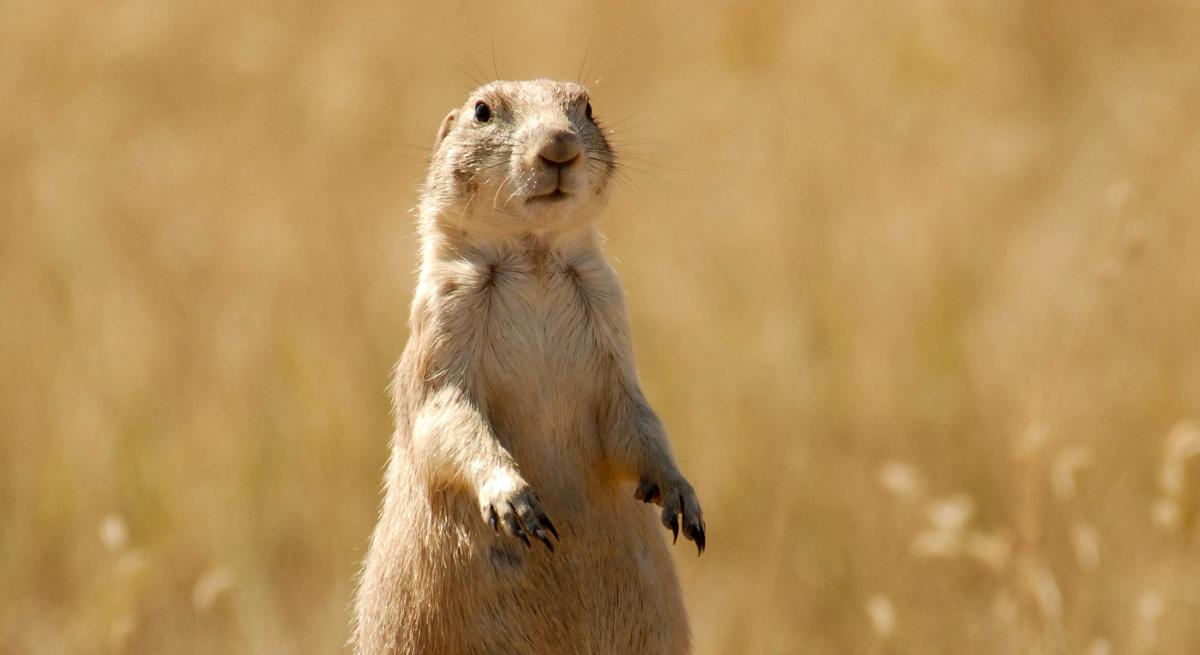
Prairie Dogs
The high-pitch calls and impressive towns of prairie dogs often make them some of the easiest wildlife to find while exploring our parks. Wind Cave National Park, Badlands National Park and Custer State Park are all home to Prairie Dogs where they are considered a keystone species due to how many other plants and animals depend on them for survival. Where you find prairie dogs you are also likely to see a variety of birds and other predators like coyotes, badgers, foxes, bobcats, and black footed ferrets. While not exactly dangerous, prairie dogs can bite and many still carry the plague so it’s important to keep your distance and not feed them. For a safe way to get a closer look check out the Awesome Ways to View section below!

Elk
It’s a special day if you spot elk in the area. These large mammals are shy creatures that tend to stay out of sight. If you’re lucky enough to spot them it will be in the Black Hills National Forest, Custer State Park, Wind Cave National Park or Jewel Cave National Monument. If you’re visiting in September or October, head to Wind Cave. That’s when mating season is taking place and it provides a unique experience to hear the loud wailing bugles of bull elk.

Mule/White Tail Deer and Pronghorns
Gracing the grasslands of Badlands National Park, Wind Cave National Park and Custer State Park is the fastest animal found in North America – Pronghorns. Commonly referred to as antelope, these mammals love the rolling hills of the prairie where they can reach speeds close to 60mph. Also frolicking the fields and weaving throughout the forested area of surrounding parks are mule and white tail deer.

Mountain Lions, Bobcats, Coyotes and Foxes
Mountain lions are the largest predator in the Black Hills. Encountering them as you explore the parks is extremely rare as they typically live in remote areas, are more active at night, and stay away from humans. Bobcats are active throughout the year, but like Mountain Lions are rarely seen. Both cats can be found in the parks and forests surrounding Rapid City. A predator more commonly seen in the area are coyotes. They are usually secretive and most active from dusk to dawn. They exist in almost every habitat throughout South Dakota, but you have a better chance of spotting them in the parks with prairie dogs. The Red Foxes found in South Dakota operate the same as coyotes. South Dakota is also home to Gray and Swift Foxes.
Black Footed Ferret
The Black Footed Ferret is one of the rarest mammals in North America. This carnivorous member of the weasel family primarily eats prairie dogs and is making its way back from near extinction. While you probably won’t spot them during a visit because they live underground and are nocturnal, know that there are still small but stable populations in Badlands National Park and Wind Cave National Park.
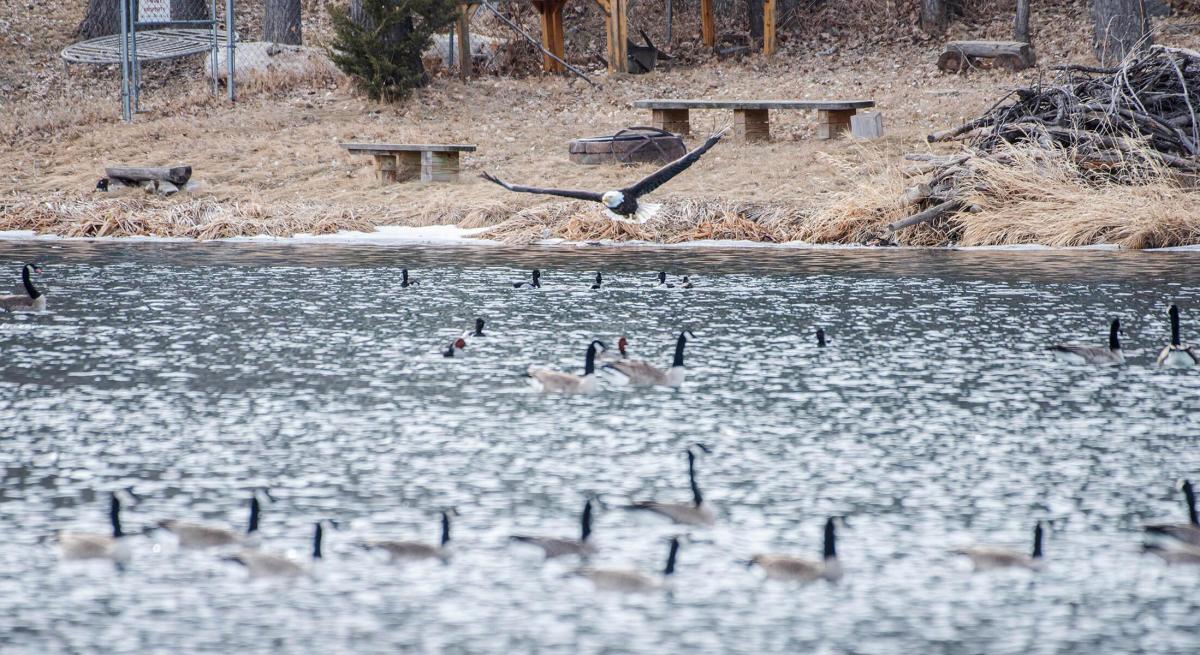
Birds of the Black Hills
If your interests are less with the four-legged creatures and more with winged ones, then you’re coming to the right place. Birding in the Black Hills area features some exciting species! More than 350 to be exact. From Bald Eagles to Hummingbirds there’s a lot to be discovered and beautiful places to spot them. For the best information on where to go, time of year and more check out this guide.
Transients and Other Animals
Our area is also known for a few transient animals from time to time that don’t call it home but wander through from neighboring states on rare occasions. They include black bears, gray wolves and moose.
The list for Western South Dakota wildlife is long. Others that should be mentioned include badgers, skunks, gophers, marmots, porcupines, opossums, beavers, raccoons, muskrats, rabbits, and turkeys.
Prairie Rattlesnakes
Lastly, let’s talk about rattlesnakes. If you’re coming to the area for outdoor adventure, it’s important to know everything that’s out there. Western South Dakota only has one type of venomous snake and it’s the Prairie Rattlesnake. Rattlesnakes, while off-putting, are an important part of the ecosystem as they help manage small mammal populations. They exist throughout the Black Hills and in the Badlands, so keep a watchful eye as you explore but don’t let their existence interfere with your enjoyment of our area. If you stick to designated trails and out of tall grass, you typically don’t have to worry about them. However, they do occasionally find their way to the trails to warm in the sun.

Visit Outdoor Campus West
Want more information about area wildlife? Check out the Outdoor Campus - West in Rapid City. On top of offering free outdoor skill courses like fishing and kayaking, the campus is also home to indoor exhibits that feature South Dakota wildlife and their habitats.
AWESOME WAYS TO VIEW WILDLIFE

Buffalo Safari Jeep Tour
One of the most exciting ways to experience the bison of Custer State Park is with a tour on the Buffalo Safari. These open top, no window jeeps take passengers where other park guests can’t go – straight off the road and into the herd. It’s an incredible experience that also includes valuable information shared about the park from your tour guide – the jeep driver!
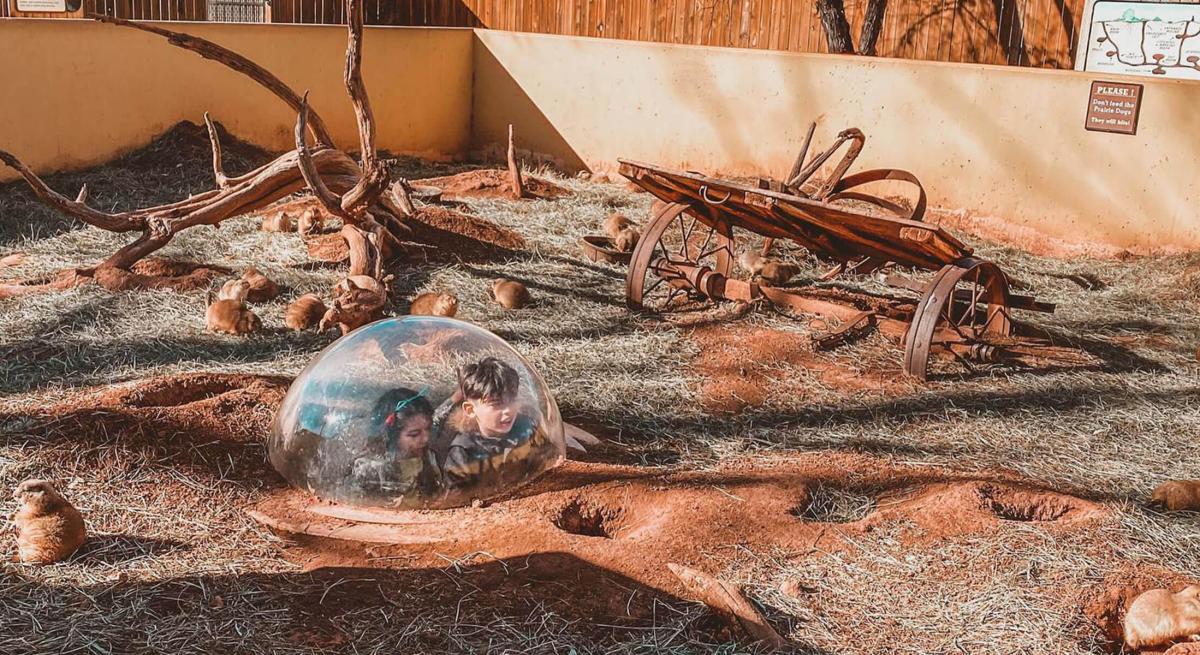
Prairie Dog Town
Reptile Gardens in Rapid City offers visitors a unique perspective of a prairie dog town by allowing you to be at eye level! It’s just one of the many unique offerings at this attraction, but one you won’t get at any of the surrounding parks.
D.C. Booth Fish Hatchery
Found in Spearfish, the D.C. Booth Fish Hatchery is one of the oldest operating hatcheries in the country dedicated to fish culture and resource management. On top of being a great stop for educational information, the hatchery continues to raise and stock trout in regional federal waters.
Black Hills Open Top Tours
Intrigued by the Buffalo Safari Jeep Tour? Look into Black Hills Open Top Tours! They offer tours in open air vehicles to the Badlands, Mount Rushmore, and even stargazing! It’s an awesome and unique way to experience the area.
The Centennial Trail
The Centennial Trail is the longest trail in South Dakota. Spanning 111 miles it beautifully connects Bear Butte State Park to Wind Cave National Park. You can hike the whole trail, bike on portions of it, and ride horseback on parts as well. As the trail weaves its way though different habitats and across numerous streams you have the opportunity to see wildlife like antelope, elk, deer, bighorn sheep, mountain goats and turkeys.

Aerial Tours
Spotting wildlife from above is also a thrilling way to witness what our area has to offer! Book a tour with Black Hills Balloons, Black Hills Aerial Adventures, or Black Hills Helicopters to soar through the skies.
Want more information on things to do in our area during your vacation? Snag our free visitors guide, it’s one of the best planning resources out there. Want monthly updates on events and new experiences? Drop your email here and our monthly newsletter will appear in your inbox.